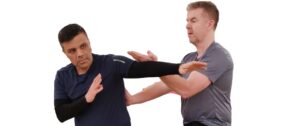
Wing Chun, the renowned Chinese martial art, is celebrated for its practicality and efficiency in close combat situations. While it incorporates a variety of techniques and principles, one of the most critical components of Wing Chun is Poon Sao. Poon Sao, also known as “rolling hands” or “lap sau,” is a fundamental exercise that not only refines your skills but also lays the foundation for advanced Wing Chun techniques. In this article, we will delve into how Poon Sao can help enhance your Wing Chun training.
Understanding Poon Sao
Poon Sao is a unique training method that involves continuous hand contact and flowing movements between two practitioners. This exercise is primarily performed in pairs, with one person acting as the attacker (the one applying force) and the other as the defender (the one receiving and redirecting the force). The primary goals of Poon Sao are to develop sensitivity, speed, and precision in Wing Chun techniques.
- Sensitivity and Reflexes
One of the key benefits of practicing Poon Sao is the heightened sensitivity it cultivates. By maintaining constant contact with your training partner’s arms, you become acutely attuned to their subtle movements and intentions. This sensitivity allows you to read your opponent’s actions and react swiftly, making it an invaluable skill in self-defense scenarios.
Furthermore, Poon Sao helps train your reflexes to respond rapidly and appropriately to different types of attacks. Over time, this heightened sensitivity and quick reflexes can give you a significant advantage in real-world combat situations, where split-second decisions can make all the difference.
- Energy Efficiency
Wing Chun emphasizes the conservation of energy, and Poon Sao is an excellent tool for honing this aspect of the art. During Poon Sao drills, you learn to absorb and redirect your opponent’s force efficiently, rather than opposing it head-on. This energy-efficient approach not only reduces fatigue during extended encounters but also enhances your ability to stay composed under pressure.
- Developing Timing and Control
Timing and control are crucial in Wing Chun, and Poon Sao provides an ideal platform for their development. As you engage in rolling hands with a partner, you learn to time your techniques with precision, ensuring that your responses are well-timed and effective. Moreover, Poon Sao fosters control over your movements, enabling you to execute techniques accurately and with finesse.
- Building Muscle Memory
Repetition is key to mastering any martial art, and Poon Sao is no exception. The countless repetitions of techniques and counters in Poon Sao drills help ingrain muscle memory, allowing you to execute Wing Chun techniques fluidly and instinctively. This muscle memory becomes especially valuable when facing unexpected and high-stress situations.
- Transitioning to Advanced Techniques
Poon Sao serves as a bridge to more advanced Wing Chun techniques. The skills and attributes honed through Poon Sao, such as sensitivity, timing, and energy efficiency, are essential prerequisites for mastering the art’s intricate techniques, including Chi Sao (sticky hands), Bong Sao, and other forms of close-quarters combat.
Conclusion
Poon Sao is not merely a basic training exercise in Wing Chun; it is the cornerstone upon which the entire system is built. By practicing Poon Sao diligently, you develop the sensitivity, reflexes, energy efficiency, timing, and control needed to excel in this martial art. Moreover, Poon Sao paves the way for mastering more advanced techniques that make Wing Chun practitioners formidable in self-defense situations. So, whether you are a novice or an experienced Wing Chun practitioner, never underestimate the power of Poon Sao in your training regimen.
